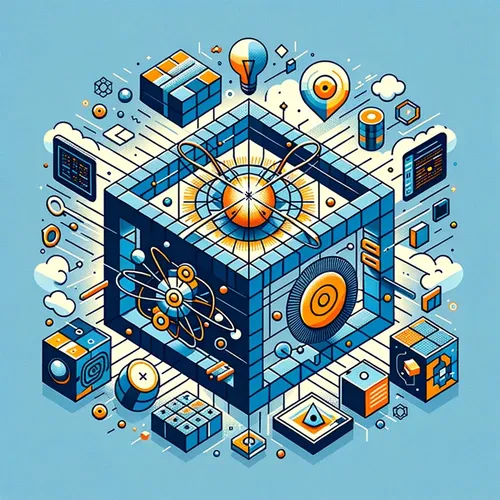Quantum-Classical Computing: Orchestrating the Future of Hybrid Breakthroughs | Quantum Computing 101
- Author
- Quiet. Please
- Published
- Mon 01 Sep 2025
- Episode Link
- https://www.spreaker.com/episode/quantum-classical-computing-orchestrating-the-future-of-hybrid-breakthroughs-quantum-computing-101--67584045
This is your Quantum Computing 101 podcast.
You ever have one of those days where you walk into the data center and feel the air—crisp as a supercooled helium bath—crackling with anticipation? That was me just 72 hours ago, witnessing the future of hybrid quantum-classical computing unfold right here in our high-performance cluster. I’m Leo, your Learning Enhanced Operator, and today on Quantum Computing 101, we’re diving into a fresh breakthrough that puts quantum-classical hybrid systems at center stage—with world-shifting implications for science, industry, and plain old human curiosity.
This week, AMD and IBM made headlines with their live demonstration of a quantum-centric supercomputing architecture—a hybrid environment where classical CPUs, high-performance GPUs, FPGAs, and real quantum processors (QPUs) collaborate on the same workloads, not in competition, but as partners. Picture a symphony: CPUs conducting, GPUs driving rhythm, and QPUs adding those haunting quantum harmonics you never knew you needed. Their orchestration hinges on an eagerly anticipated software layer—one so deft it’ll let workloads be broken down, then steered dynamically to whichever processor can do the job best. The result? Think optimal molecular simulations, logistics optimization, real-time financial modeling—at scales and speeds neither classical nor quantum computers could achieve alone.
Let me paint you inside the control room. Fluorescent lights reflecting off racks of humming machines, racks housing AMD’s EPYC processors and Instinct accelerators stacked alongside a sleek rack-mounted QPU from IBM. The screens show quantum circuits, worker queues, error rates, and—crucially—the scheduling dashboard: jobs flowing from high-precision classical linear algebra on GPUs, to correlation-heavy quantum subroutines that only a QPU’s entanglement can touch. It's not just multi-core, it’s multi-physics.
Antonio Corcoles from IBM summed up the challenge perfectly: QPUs and GPUs don’t speak the same language. It’s a Babel Tower of compute paradigms. The software orchestrator, powered by new open-source tools from the AMD-IBM partnership, is the interpreter—breaking up monster workloads, sending the right chunk of code to the right kind of silicon, and, faster than you can snap a Josephson junction, weaving everything back together. The orchestration is precise, like quantum teleportation for classical and quantum information, shuttling data to where it can best be transformed.
Hybrid solutions right now are driving breakthroughs in fields like genomics—see the Sanger Institute and Quantinuum’s quest to quantum-encode whole genomes. In Oak Ridge, orchestration frameworks already let hybrid clusters attack climate models too complex for any one system. The metaphor is clear: just as our brains blend conscious logic and subconscious intuition, quantum-classical computing fuses speed, scale, and quantum weirdness to create something fundamentally new.
As quantum advances accelerate, hybrid computing is how we bridge our deterministic past and entangled future. From investment surges to these new hybrid blueprints, quantum is no longer an island—it’s the most exciting continent in the computational world.
If you’ve got questions or want to suggest topics, email me anytime—[email protected]. Don’t forget to subscribe to Quantum Computing 101. This is a Quiet Please Production. For more, check out quietplease.ai. Thanks for listening—now let’s keep pushing the frontier, together.
For more http://www.quietplease.ai
Get the best deals https://amzn.to/3ODvOta
